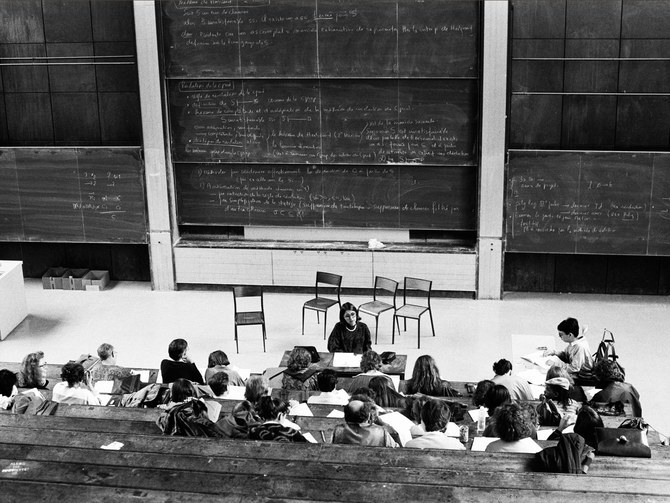Traditional lectures are dead - I tell you, as a teacher

In the days of my youth, there was no world wide web or streaming video. If you wanted to watch something, you would have to wait until it appears on television. Sometimes you could decide: “And I’ll see some kind of show,” and you had to switch channels until you found something interesting. This is how I opened the program " Mechanical Universe and Beyond ".
If you are not familiar with this wonderful TV show of the mid-80s, then it was essentially an introductory course in college-level physics written by the University of California. There were lectures by David Goodstein, an applied physicist, some wonderful physical demonstrations and all sorts of cool things like historical reconstructions. What I remembered most of all was the unusual way in which they manipulated mathematical equations with strange animations. Now, thinking about it, I think that these animations probably reinforced the misconception about “transferring something to another part of the equation”, but nonetheless. They were cool.
On the Internet, you can find the “mechanical universe” on YouTube, and you just need to do it. She's not just great done, she shows why traditional college lectures are dead.
What is a traditional lecture? This is a learning model in which the teacher, having knowledge of the subject, distributes them among students. This model goes back to the very roots of learning, when this way of sharing information was the only one. They still say that a person “reads a lecture”, because once, even before the Internet and typography, the teacher literally read a book, and the students wrote it down.
Don't get me wrong, the traditional model of lectures has worked perfectly for ages. But this idea is outdated - it becomes obvious when you look through at least one series of the Mechanical Universe. Close your eyes and imagine that you are in college on a physics course where a professor gives you a traditional lecture. Now open your eyes. Have you imagined the best lecture in physics possible? Hardly. You probably imagined a man mumbling in front of a wooden board or PowerPoint presentation. This could not be more interesting or exciting than the episode of the Mechanical Universe. And if you are a teacher reading traditional lectures, stop doing this and just put on a series of shows. All this will be better.
But wait - let's say, you can do what the video cannot - invite students to participate in the discussion, ask questions. Fine! But I still tell you - put a series of "Mechanical Universe". When someone wants to ask a question, pause the show. It will still be steeper than any lecture.
You probably think that I think most professors of physics are dummies. This is absolutely not true. But traditional lectures are simply ineffective. Studies show that students do not learn through hearing and vision, they learn through actions — this is often called active learning.
Physical faculties should think about how to go beyond the traditional lecture. They can take simple steps (or students can ask for it) to make learning more enticing. First, let the students read the textbook not in the classroom. If your lecture just repeats material from a textbook, why should students buy a textbook? Of course, you can present the material differently, but still. You simply repeat what students can read for themselves. Let them read it on their own, and you use the audience for experiments, demonstrations, etc. This is the idea of inverted learning - in recent years I have increasingly resorted to it. It makes learning more interesting.
Another simple trick? Start using the student response system. When discussing a topic, give the class a choice question, and have students discuss it and vote. If they answer correctly, great. If not, explain why they are wrong, and give them another chance. I found that the most productive lessons are those in which the class is divided between the two answer choices, and each tries to convince the other half. For example, you can ask how an object will move if force is constantly applied to it. Some students will answer that it will move at a constant speed, while others will say that the speed will change. In an attempt to convince their opponents, great discussions arise. It may seem like chaos to me, but in my experience it works great.
One of my favorite tricks for more active learning is the good old problem solving. Give students a problem — or let them come up with it themselves, and then solve them in groups. You will be surprised how many students will learn by working in a group and then sharing answers with classmates. This is my favorite technique, because it is easy to implement, and students like the fact that it helps them to practice solving tasks that they can meet in the exam.
These are just a few examples. You may have others. It is necessary not just to use any of the examples, but to go beyond the boundaries of the traditional lecture, creating an environment in which students take an active part. You may encounter some difficulties and even unwillingness to apply this method. Start small. One step at a time. But do something, because teachers who continue to read traditional lectures will soon discover that they have been replaced by video.
All Articles